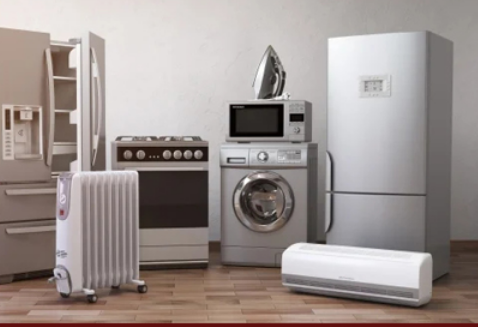Solving Common Issues: How to Use Aluminium Paste in Plastics
2025 / 10 / 23Achieving perfect metallic finishes in plastics can be challenging, but with the right aluminium paste and techniques, it’s within reach.
For manufacturers seeking vibrant, metallic finishes in plastic products, aluminium paste (often called "aluminium silver paste" or "aluminium slurry") offers an attractive solution. This material delivers stunning visual effects while eliminating the need for traditional painting processes.
However, using it effectively requires understanding its unique characteristics and handling requirements. In this article, we’ll explore practical solutions to common challenges when working with aluminium paste in plastic applications.
Understanding Aluminium Paste in Plastic Applications
Aluminium paste consists primarily of tiny, flat aluminium particles suspended in a carrier fluid. When properly incorporated into plastics, these particles create brilliant metallic surfaces directly during injection molding, making post-processing painting unnecessary .
The material is particularly valuable for applications requiring eye-catching metallic appearances, including:
-
Household appliance exteriors
-
Automotive interior and exterior components
-
Mobile phone casings
-
Plastic packaging and toys
Despite its advantages, manufacturers often face two persistent issues: flow marks and weld lines. These imperfections occur when aluminium flakes curl, flip, or break during the injection process, resulting in uneven metallic appearances .
Selecting the Right Aluminium Paste for Your Plastics
Choosing the appropriate aluminium paste is crucial for achieving optimal results. Consider these key factors:
Material Compatibility
Aluminium pastes designed for plastics must work effectively with various polymer systems. Look for products compatible with your specific plastic material, whether it’s PE, PP, PC, ABS, PS, AS, or other polymers .
Type of Aluminium Paste
-
Floating types provide high reflectivity and a chrome-like effect but may be prone to oxidation
-
Non-floating types distribute evenly throughout the plastic matrix, offering better durability and resistance to oxidation
For plastic applications where durability matters, non-floating aluminium pastes typically deliver superior performance because they become thoroughly embedded in the polymer structure .
Proper Incorporation Techniques
Preparation and Mixing
The way you prepare and mix aluminium paste significantly impacts your final results:
-
Add appropriate solvents to the aluminium paste first, using slow-speed stirring
-
Allow adequate soaking and dispersion time
-
Avoid high-speed shear mixing, which can damage the aluminium flakes’ structure and diminish metallic effects
Recommended Incorporation Methods
For plastic processing, the standard approach involves:
-
Directly adding the paste to plastic particles or powder
-
Using low-speed mixing until uniform distribution is achieved
Solving Common Application Problems
Addressing Flow Marks and Weld Lines
Flow marks (also called "tiger stripes") and weld lines represent the most frequent challenges with metallic finishes in plastics. These issues occur because:
-
Aluminium flakes orient themselves differently during plastic flow
-
Flakes curl or flip at flow front boundaries or material convergence points
Solutions:
-
Optimize mould design to minimize flow obstacles and abrupt direction changes
-
Adjust process parameters including temperature, injection speed, and pressure
-
Select aluminium pastes specifically engineered to resist curling and breaking
-
Modify part geometry when possible, avoiding features that disrupt flow patterns
Preventing Black Spots and Poor Dispersion
Inadequate dispersion manifests as black spots, streaking, or uneven metallic effects:
-
Ensure complete dispersion before moulding
-
Use appropriate dispersion aids when necessary
-
Avoid excessive processing temperatures that can degrade the aluminium flakes
Maintaining Metallic Brilliance
To preserve the vibrant metallic appearance:
-
Limit reprocessing cycles – repeated heating and shearing damages aluminium flakes
-
Control temperature precisely throughout the process
-
Avoid excessively high filler content that can crowd the polymer matrix
Recommended Usage Parameters
Following manufacturer guidelines ensures consistent results:
-
For masterbatch production: 15-45% aluminium paste content
-
For direct injection moulding colouring: 0.5-5% aluminium paste content
Specific applications like agricultural films may require different formulations tailored to those needs .
Storage and Handling Best Practices
Proper storage maintains aluminium paste performance:
-
Keep containers tightly sealed when not in use
-
Store at temperatures not exceeding 25-35°C
-
Avoid direct sunlight, moisture, and high humidity
-
Use opened containers promptly and reseal immediately after use
Advanced Solutions for Demanding Applications
Specialized Formulations
For challenging applications where conventional aluminium pastes fall short, consider:
-
Surface-treated aluminium pastes with improved compatibility
-
Specially coated varieties offering enhanced chemical resistance
-
Pre-dispersed formulations designed for specific polymer systems
Process Optimization Techniques
Even with premium aluminium paste, process adjustments might be necessary:
-
Modify injection speed to better align aluminium flakes
-
Adjust mould temperatures to optimize flow and setting behaviour
Conclusion: Mastering Aluminium Paste in Plastics
Success with aluminium paste in plastic applications comes from understanding the material’s unique characteristics and handling requirements. By selecting the right product, following proper incorporation methods, and implementing targeted solutions for common issues, manufacturers can achieve stunning metallic finishes that enhance product appeal while reducing production steps and costs.
The key lies in treating aluminium paste not as a simple colourant but as a specialized effect material requiring specific handling—a approach that pays dividends in final product quality and production efficiency.
Interested in learning which aluminium paste formulation works best for your specific plastic application? Contact our technical team for personalized recommendations and samples tailored to your needs.



